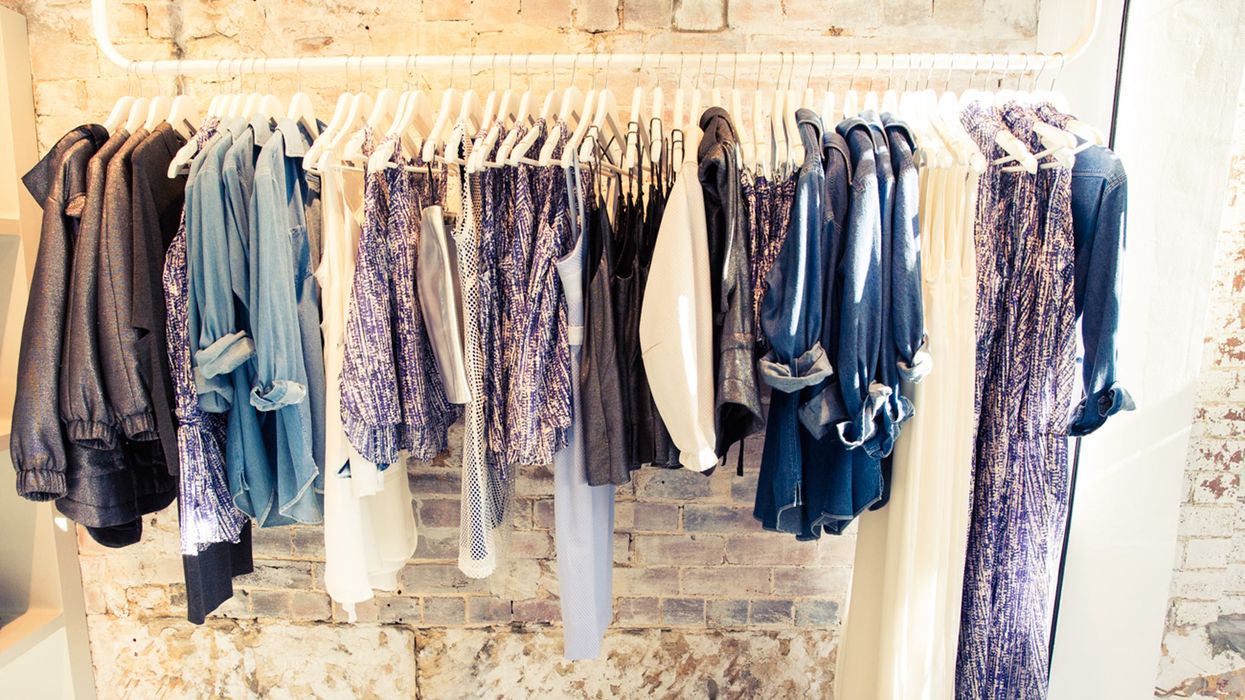Raise Your Wardrobe with Stunning Boutique Fashion Basics
Raise Your Wardrobe with Stunning Boutique Fashion Basics
Blog Article
Lasting Fashion: Just How Eco-Friendly Garments Is Shaping the Future of Design
As the fashion market faces increasing analysis over its environmental impact, the surge of sustainable style offers an appealing choice that aligns style with environmental obligation. boutique fashion. Just how does this activity truly influence the future trajectory of fashion, and what obstacles lie ahead in its extensive fostering?
Ingenious Lasting Materials
As the apparel industry comes to grips with its ecological effect, innovative lasting products have actually become an essential service for reducing environmental footprints. Amongst one of the most appealing materials are those derived from all-natural, eco-friendly sources, such as organic cotton, hemp, and bamboo. These materials not just lower dependence on fossil gas yet likewise lessen harmful pesticide usage and water consumption. Organic cotton, for instance, utilizes substantially much less water than traditional cotton and removes the requirement for poisonous chemicals, thereby protecting dirt wellness and biodiversity.
In addition to plant-based materials, innovations in biofabrication have actually resulted in the advancement of lab-grown fabrics. Mycelium natural leather, originated from mushroom roots, offers a eco-friendly and versatile alternative to pet leather. Its production causes significantly lower carbon discharges and water use, making it a much more sustainable option for stylist seeking to align with environment-friendly techniques.
Recycled products are likewise getting grip, with polyester made from recycled plastic bottles representing a considerable innovation. This innovation not only diverts plastic waste from land fills and seas however also decreases energy intake compared to creating virgin polyester. Together, these products underscore the possibility for a more sustainable fashion business, leading the way for environmentally conscious design and manufacturing.
Eco-Conscious Manufacturing
Building on the developments in sustainable materials, the style sector is likewise re-evaluating its manufacturing processes to better decrease ecological influence. Key approaches include lessening water consumption, minimizing carbon discharges, and eliminating unsafe chemicals.
Another crucial element is the decrease of harmful chemicals generally used in dyeing and ending up textiles. Eco-conscious makers are shifting in the direction of plant-based dyes and waterless dyeing innovations, which not only secure neighborhood communities however likewise enhance employee safety. Technologies like digital printing minimize textile waste and power usage, providing a cleaner choice to typical methods.
Furthermore, openness and traceability have ended up being paramount. With the improvement of blockchain technology, business can now give comprehensive insights right into their supply chains, ensuring ecologically friendly and moral techniques at each action. This transparency develops consumer count on and encourages brand names to maintain high sustainability standards. As the need for eco-conscious items expands, manufacturers are urged to innovate, ensuring that the future of style is both lasting and stylish.
The Increase of Upcycling
Upcycling, a transformative technique in lasting fashion, involves artistically repurposing discarded products right into new, top notch items. This ingenious method not only lowers waste however also lessens the demand for resources, therefore lessening the environmental influence of garments production. By reimagining and reconstructing existing things, designers and fashion brands have the ability to instill creativity into their collections while promoting environmental duty.

Moreover, the upcycling motion has actually encouraged independent designers and little organizations, who typically lead in technology as a result of their agility and creativity. By taking advantage of the bountiful availability of extra materials, these entities add to a round economy, demonstrating that style can be both sustainable and stylish. With upcycling, the sector takes considerable strides towards a much more liable and conscious future.
Thrift Culture's Influence
The growing second hand society dramatically reshapes the landscape of sustainable fashion, stressing the significance of conscious usage. This social change encourages customers to accept previously owned clothes, thus decreasing the demand for brand-new garment production and reducing ecological influence. Thrift shopping not only extends the lifecycle of clothing however likewise lowers the carbon footprint connected with manufacturing, transferring, and disposing of garments.
A key facet of second hand culture is its democratization of fashion. By supplying a wide variety of designs from numerous eras at affordable prices, second hand stores make fashion obtainable to a wider audience. This availability fosters a feeling of individuality and imagination, as customers mix and match one-of-a-kind pieces to curate tailored wardrobes without adding to the fast style cycle.
Furthermore, second hand culture advertises look these up circularity in vogue, aligning with the concepts of a round economic situation. By recirculating garments, the cycle of waste is disrupted, and sources are conserved. This method sustains a change from a direct "take-make-dispose" version to a much more sustainable framework. As even more consumers and developers welcome second hand society, the fashion business is urged to adjust, integrating sustainable techniques to meet the expanding demand for eco-conscious alternatives.

Future Trends in Style
Style's development is significantly shaped by technological advancements and sustainability-driven efforts. One noticeable fad is the rise of digital fashion, where online garments can be used in increased reality atmospheres, dramatically decreasing material waste.
In addition, the integration of blockchain innovation supplies new possibilities in openness and traceability, permitting customers to confirm the sustainability qualifications of their garments. boutique fashion. This makes sure accountability in supply chains and promotes ethical sourcing practices. 3D printing is yet one more advancement that assures to reinvent producing procedures by making it possible for on-demand production, consequently decreasing excess stock and waste
In addition, the growth of bio-fabricated materials, such as lab-grown leather and plant-based textiles, offers sustainable alternatives to typical products. These technologies minimize reliance on pet items site web and resource-intensive crops. As these modern technologies grow, they are poised to change the style landscape, merging design with sustainability. The future of style, therefore, exists in a smooth blend of innovation, development, and ecological responsibility.
Conclusion
The change of the fashion market with lasting practices indicates a pivotal shift towards environmental accountability. This advancement not only straightens fashion with eco-friendly sustainability however also establishes a criterion for future patterns concentrated on responsibility and innovation.
As the fashion industry deals with raising scrutiny over its ecological effect, the surge of sustainable style supplies an encouraging alternative that lines up design with environmental obligation.As the fashion market grapples with its ecological effect, cutting-edge lasting products have arised as a critical remedy for lowering environmental footprints. With each other, these products underscore the possibility for a much more sustainable style sector, leading the means for ecologically mindful style and production.
Building on the developments in sustainable products, the fashion industry is also re-evaluating its manufacturing processes to additionally reduce environmental influence. boutique fashion.Upcycling, a transformative practice in lasting fashion, includes creatively repurposing discarded materials right into new, premium products
Report this page